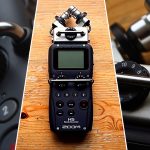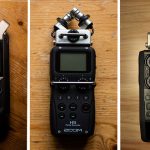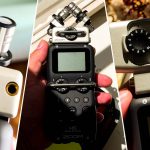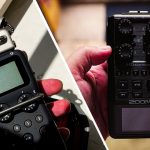Chances are you’ve owned your trusty Zoom H4n for a few years now, and you’re looking to upgrade. Upon doing a bit of research, you find out that Zoom has two shiny recorders, the Zoom H5, and the Zoom H6.
The question is, which one is best for you? In this article, we are going to explore the differences between the two recorders, and what purpose the different features might lend themselves to.
Before we begin, I am going to point out that the Zoom H5 and Zoom H6 are two very similar recorders, but they are built for different purposes. As we go through the article, I am going to lay down the actual differences, and explain what situation each option would be better suited for.

Inputs
The Zoom H5 only has two XLR inputs, as opposed to the four built-in XLR inputs on the Zoom H6.
If you plan on doing journalism, or recording one on one interviews, which would only require a maximum of two external microphones, the two XLR inputs on the Zoom H5 will suffice.
On the other hand, the four built-in XLR inputs on the Zoom H6 gives you the ability to plug in four microphones, thus making it perfect for podcasts, recording demos, band recording, etc.
Battery Life
Even though both recorders have exceptional battery life, the Zoom H5’s is shorter than that of the Zoom H6, according to Zoom.
This was presumably measured without any external microphones connected to the devices. Bear in mind that connecting two microphones to the H5, or four to the H6, will lower the battery life, especially if you are using phantom power.
There are many different variables which would potentially affect the battery life of the device, but the takeaway is that they both can record for hours at a time, and It’s always worth carrying some extra batteries with you, just in case.
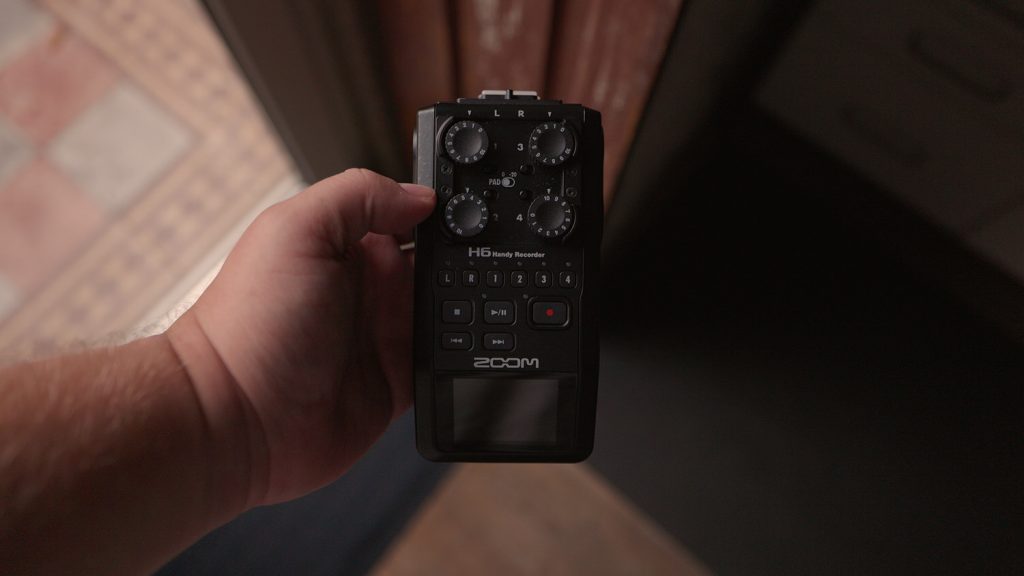
Size & Build
The Zoom H5 is a bit smaller and lighter than the Zoom H6. This is important to consider if you plan on adding it on top of a DSLR, which might already have a battery pack strapped to it.
The actual dimensions for the Zoom H5 are 7.77 x 2.63 x 1.66 inches, and it weighs 9.52 oz (269 grams). The Zoom H6 comes in at 14.46 oz (410 grams), and measures 8.39 x 3.1 x 1.88 inches.
Even though both are sturdy and rugged, it’s worth to point out that the Zoom H6 is rather larger and heavier, and this should be taken into consideration.
Display
When it comes to the displays, the H5 has a backlit LCD, whilst the H6 has a much nicer 2″ full-colour LCD.
Also, whilst the Zoom H6 screen is angled slightly down (see image below), the H5 is not. This is neither a good thing, nor is it a bad thing, as it just depends on what you’re using the device for.
If you’ll be looking down at the recorder, the Zoom H5 screen is better for that. If, on the other hand, the recorder will be closer to eye level, like if it it’s mounted on a DSLR camera, the H6 screen will allow you to monitor levels without having to move your camera too much in order to look at the screen.
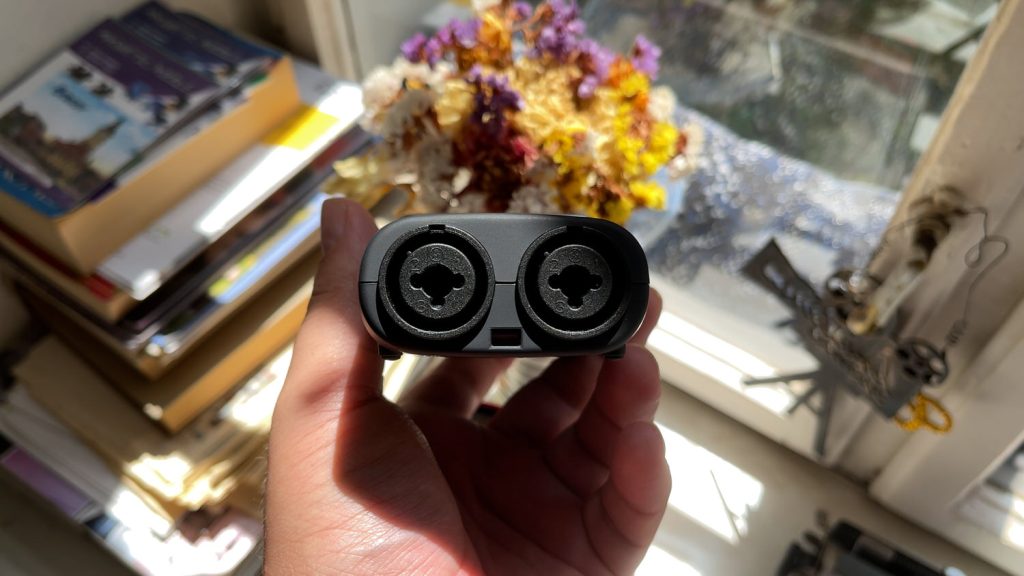
Phantom Power
Whilst both recorders offer phantom power, which is needed by some microphones, the Zoom H6 offers phantom power for all its 4 x XLR inputs. The two extra XLR inputs which can be mounted on top with a modular component can not receive phantom power on either the H5 or the H6.
Free Sound Effects
By the way, did you know I have compiled the largest list of free sound effects in the world? Over 500GB of sounds, ready to be downloaded, free of charge. Just figured you’d want to know. And now, back to the review.
Sound Quality
In regards to sound quality, they’re about the same. No major differences between the two, though they both sound much better than the older Zoom H4n, especially in regards to self noise.
When it comes to pre-amps, neither of them are as good as the Sony PCM-D100, though the Sony device does not have XLR inputs, and in either case, the Zoom H5 and Zoom H6 have better pre-amps than the Zoom H4n.
Simply put, when recording quieter sounds, there is less hiss produced as a byproduct when you pump up the gain, compared to the older H4n.
Wind Protection
If you have to record outdoors, which might be the case if you’re a journalist, field recordist, sound effects recordist, if you’re recording a live band, or more, the foam windshield that comes with either recorder will prove itself to be rather unhelpful.
It’s great when recording indoors, but any real gust of wind will make the recording unusable. Luckily, Rycote sells a three-in-one solution for each recorder.
A grip, by which you can hold the recorder, a shock mount which basically eliminates handling noise, and a good quality windshield, which will protect the microphone from wind, though very strong winds might still affect the microphone.
Levels
The Zoom H5 has a metal bar which makes it difficult to accidentally change the input levels. Whilst the H6 does have some measures in place in order to prevent that, the H5 method feels a lot more reliable, as it is a large metal bar, physically preventing you from doing it.
If you know you’re likely to accidentally hit, or run your hand over the recorder and change the levels, this might be something to take into consideration.

Which?
Which one should you get? Ultimately, both recorders are very similar, but built for different purposes. They’re both quite rugged and well built, have good sound quality, modular microphones, and multiple XLR inputs.
If all you need is to connect a maximum of two microphones to it, like in a one on one interview setting, the Zoom H5 will suffice. That being said, if you think you might one day need to plug in a few extra microphones, it’s worth spending a little bit of extra money and getting the Zoom H6.
The price difference isn’t massive, around £60 usually, or $80, and by getting the Zoom H6, you’re future-proofing yourself.
Thank you very much for reading my review of the Zoom H5 vs Zoom H6. I invite you to have a look at some of my other articles. We have something for everyone, whether you’re interested in audio, or cameras and lenses. Alternatively, if you prefer video reviews, feel free to have a look at my YouTube channel.
Product Links
Down below you will find all of the items I talked about in this article.
